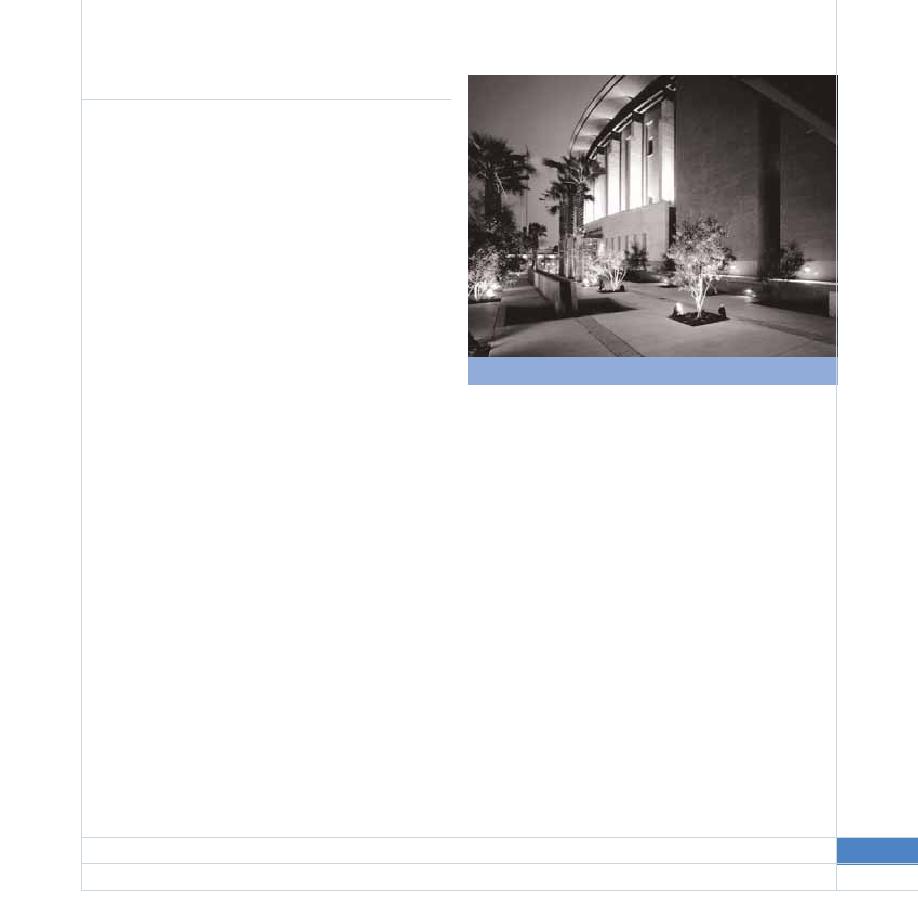
2.12 Landscape Lighting
Landscape lighting should be used to ensure safety
and security on the site, to provide adequate luminaire
placement, light distribution and visual comfort for
nighttime visual tasks and to define visual interest by
highlighting special site features. See Chapter 6: Electrical
Engineering, Lighting, Exterior Lighting.
The primary purpose of any particular application of
landscape lighting is to determine the hierarchy of
requirements for light distribution and intensity.
Generally, unobtrusive lighting designs and luminaire
placement are preferred. Where the primary intent of the
lighting is aesthetic, the A/E is encouraged to consider
U.S. Courthouse, Brownsville, TX
low-voltage systems.
Luminaires. Site luminaires should complement and be
designed to minimize light trespass from the building or
integrated with other site elements. Luminarie placement
site. In non-urban areas, this helps to reduce the impact
should include consideration of direct glare from light
of the development on the nocturnal environment. For
source and reduced contrast ratios to allow for proper
more information on reducing light pollution consult the
and consistent use of night vision. To avoid plant damage
IESNA Recommended Practice Manual: Lighting for
and fire hazard, high intensity or heat generating
Exterior Environments, or visit, www.darksky.org.
luminares shall not be located immediately adjacent to
plant material. The required sleep cycles of plants should
Color. It is recommended that a consistent lamp
also be considered. Luminares shall be resistant to
correlated color temperature be used throughout the
vandalism and easily replaceable from local sources.
project site.
should be controlled by clock-activated or photocell
activated controllers.
45
SITE,
LANDSCAPE
AND
COMMUNITY
DESIGN
2.12
Landscape Lighting
Revised March 2005 PBS-P100


 Previous Page
Previous Page
